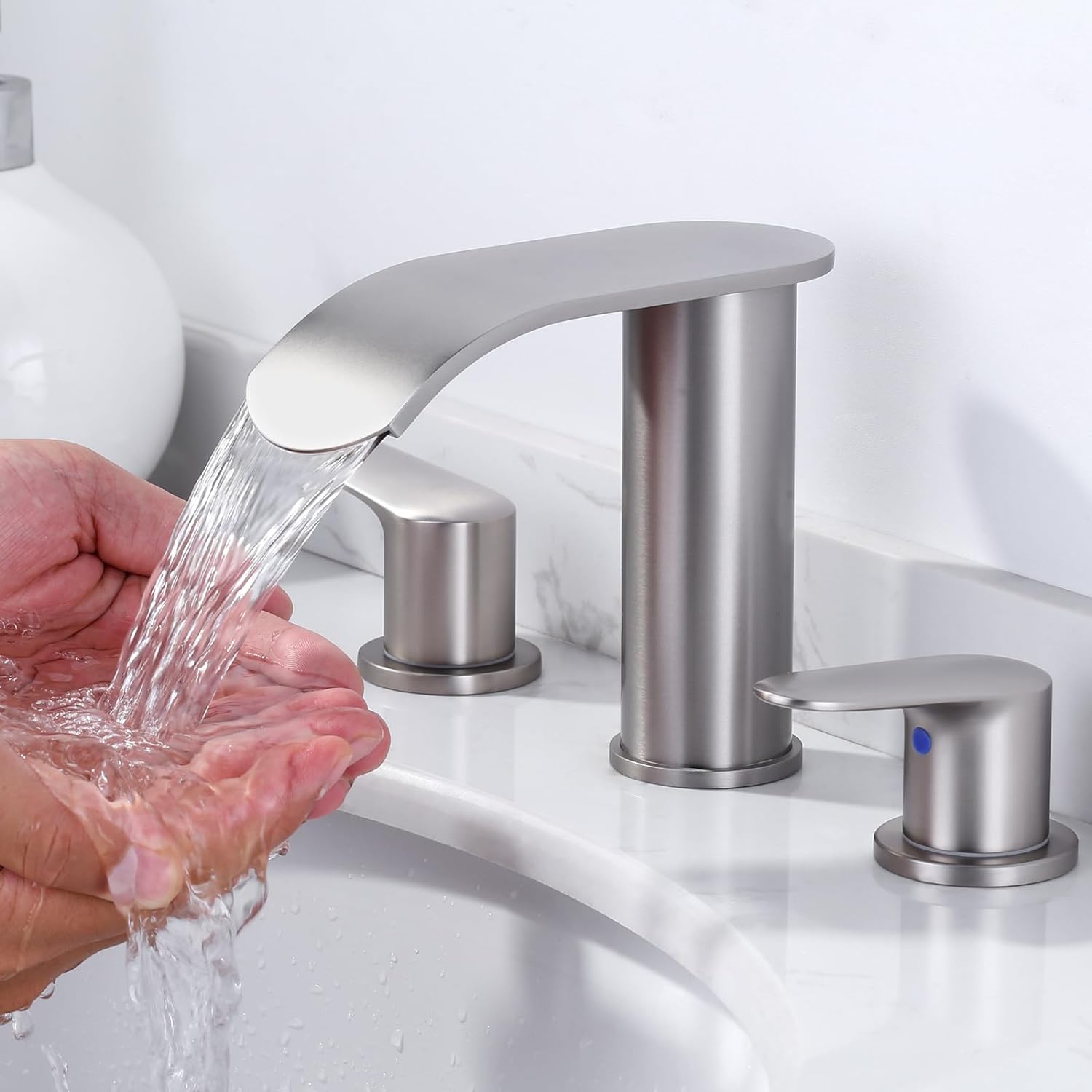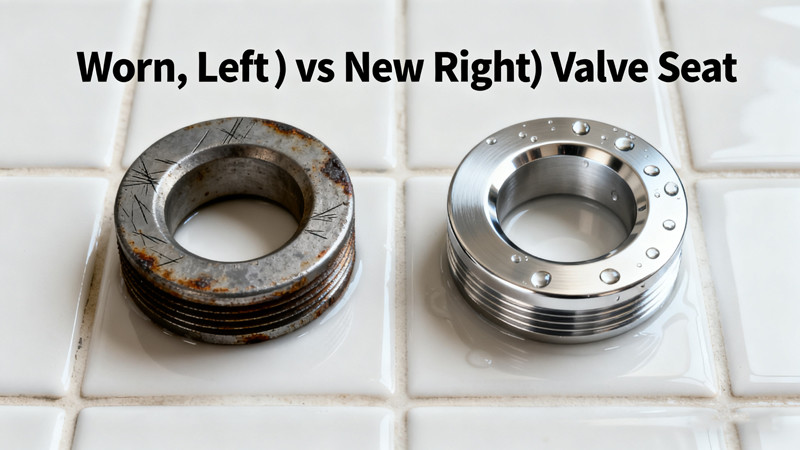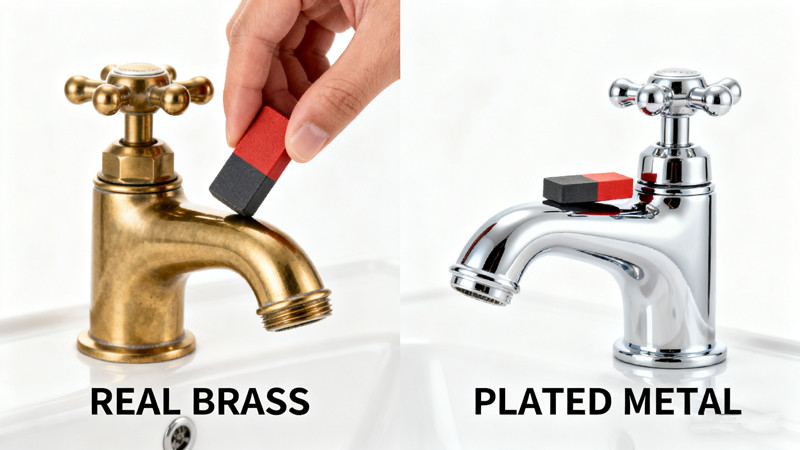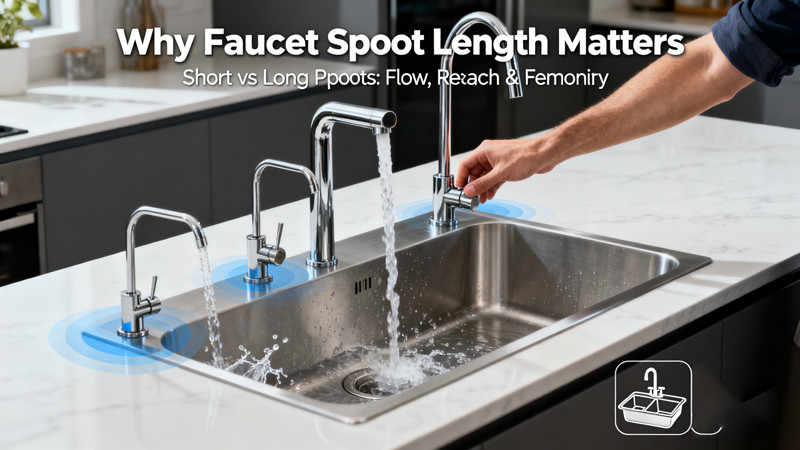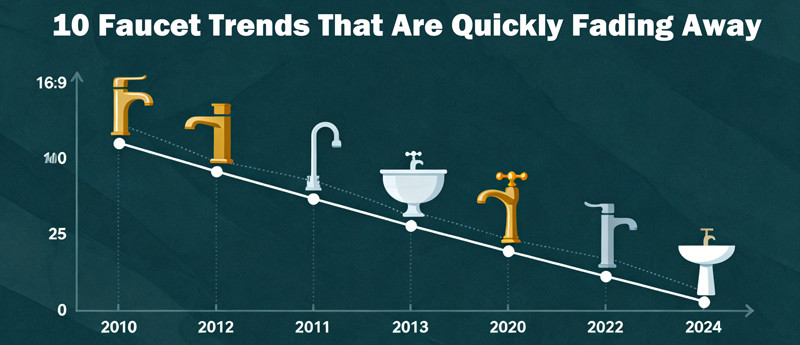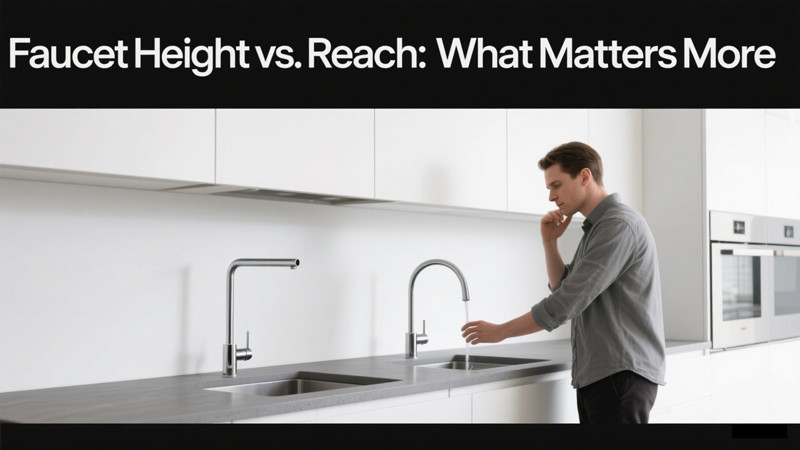
When choosing a faucet for your kitchen or bathroom, most people focus on style, finish, or brand. But two of the most important (and often overlooked) factors are faucet height and faucet reach. These two dimensions play a critical role in functionality, comfort, and overall user experience. So the question is—what matters more: faucet height or reach?
The answer isn’t one-size-fits-all. It depends on where and how the faucet will be used. Let’s break down the differences, benefits, and ideal use cases of faucet height and reach to help you decide which one matters more for your needs.
What Is Faucet Height?
Faucet height refers to the vertical distance from the base of the faucet (where it connects to the sink or counter) to the top of the spout. It’s essentially how tall the faucet is.
There are generally two types of faucet heights:
- Low-arc faucets: Typically 3–8 inches in height.
- High-arc faucets (also known as gooseneck faucets): Typically 8–16 inches or taller.
Benefits of High-Arc Faucets:
- More vertical clearance: Easier to fill tall pots, vases, or buckets.
- Modern aesthetics: Gooseneck styles are trendy in kitchens.
- Less splashing (when properly matched to sink size).
Downsides:
- Can overwhelm small sinks or tight spaces.
- May require more wall clearance in bathrooms with mirrors or shelves.
What Is Faucet Reach?
Faucet reach is the horizontal distance from the center of the faucet base to the spout’s tip—essentially how far it extends over the sink.
Reach matters more than most people realize, especially when:
- Your sink is deep or wide.
- You’re installing a wall-mounted faucet.
- You’re dealing with corner or undermount sinks.
Benefits of a Longer Reach:
- Water hits the center of the basin (not the side).
- Makes it easier to wash dishes or hands without reaching.
- Reduces water splashing on the countertop or backsplash.
Downsides:
- A reach that’s too long for a small sink can cause splashing.
- May look out of proportion in compact bathrooms.
Why Reach Often Matters More Than Height
While faucet height influences style and clearance, faucet reach affects usability.
Imagine a faucet that’s beautifully tall but doesn’t extend far enough into the sink. You end up having to lean over or splash water just to wash your hands. Now imagine a faucet that reaches far enough over the sink bowl—you can comfortably wash or fill containers without the mess.
So in many cases, especially in kitchens or busy bathrooms, reach can be more important than height.
Ideal Combinations Based on Use Case
Let’s look at when to prioritize reach, height, or both.
🛁 Bathroom Sink:
- Priority: Reach
- Why: Bathroom sinks are often shallow. A faucet that’s too short in reach causes water to hit too close to the back edge, making hand washing awkward and messy.
- Tip: Look for a reach of at least 5 inches to hit near the center of the bowl.
🍽️ Kitchen Sink:
- Priority: Height and Reach
- Why: You need the height for pot clearance and the reach for cleaning. A faucet with both a high arc and generous reach allows better movement.
- Tip: Choose at least a 14–16 inch height and a 9–10 inch reach for maximum usability.
🚿 Laundry or Utility Sink:
- Priority: Height
- Why: These sinks are deeper, so reach is less of a problem. A tall faucet is better for filling mop buckets or cleaning bulky items.
- Tip: Opt for a commercial-style or high-arc faucet.
🛠️ Wall-Mounted Faucets:
- Priority: Reach
- Why: You can’t adjust the faucet’s base, so getting the reach right is critical. Too short, and the water will splash against the back wall; too long, and it could hit the front rim.
- Tip: Measure from the wall to the center of the sink basin before choosing.
How to Measure the Right Faucet Dimensions
Before purchasing a faucet, grab a tape measure and follow these tips:
- Sink size: Measure the width and depth of your sink. The faucet should ideally reach the center of the bowl.
- Clearance: Check space above and behind the sink to avoid conflicts with cabinets or backsplashes.
- Countertop distance: Ensure the height won’t look out of proportion, especially in small bathrooms.
- User height: Taller users may appreciate higher spouts in the kitchen; shorter users may prefer faucets with pull-down heads instead.
Final Verdict: Which One Matters More?
If you had to choose just one—reach often matters more in terms of comfort and functionality. It affects where the water lands in the sink, how you interact with the space, and whether daily tasks feel smooth or clunky.
That said, height becomes critical when dealing with specific tasks (like filling pots) or in design-forward spaces where the faucet is a visual centerpiece.
In most cases, the best faucet balances both dimensions to match your sink and lifestyle.
Conclusion
Faucet height and reach are more than just technical specs—they directly affect how well your faucet works and how enjoyable your kitchen or bathroom is to use. When shopping, don’t just fall for a pretty finish or a trendy brand. Take the time to measure, consider your space, and think about how you’ll actually use the faucet day-to-day.
So the next time you find yourself asking, “Does faucet height or reach matter more?”, remember: reach wins in function, height wins in form—but both deserve your attention.
 WOWOW Faucets
WOWOW Faucets